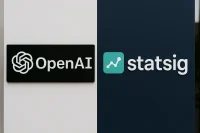In an era defined by agility and on-demand talent, micro-internships have emerged as a compelling bridge between traditional internships and freelance gigs. These short-term, project-based assignments often lasting from a few days to a few weeks offer students and early-career professionals real-world experience while providing employers with flexible, cost-effective support for discrete tasks. As the summer hiring season accelerates, micro-internships are gaining momentum as a strategic tool for career exploration, skills development, and talent acquisition.
This article explores the rise of micro-internships, their benefits and challenges for all stakeholders, best practices for success, and how this model is reshaping the future of experiential learning and workforce strategy.
Defining the Micro-Internship
A micro-internship is a professional assignment designed to be completed remotely or on-site in a compressed timeframe—typically ranging from one day to eight weeks. Unlike semester-long internships, these projects focus on specific deliverables such as market research, data analysis, social media campaigns, or process improvement. Compensation may be hourly, project-based, or paid as a stipend, and participants gain tangible examples of work to showcase on résumés and portfolios.
The concept originated in elite consulting and legal recruiting circles nearly a decade ago but has since been popularized by specialized platforms that match candidates to companies of all sizes. Today, micro-internships span industries from finance and marketing to nonprofit and technology.
Why Micro-Internships Are on the Rise
Flexibility for Employers
Companies face fluctuating workloads and often require burst-capacity talent for short-notice projects. Micro-internships allow hiring managers to:
- Access specialized skills without long-term commitments
- Trial potential future hires on real assignments
- Scale project support up or down based on budget and timing
Accessible Experience for Students
For students and recent graduates, traditional internships can be highly competitive and calendar-constrained. Micro-internships offer:
- Variety: Exposure to multiple industries or functions in a single season
- Speed: Rapid onboarding and quick impact—ideal for summer breaks or between semesters
- Portfolios: Completed project deliverables to strengthen job applications
Alignment with Modern Work Trends
The rise of remote work, gig platforms, and agile project management has primed organizations and talent alike to embrace short-cycle engagements. Micro-internships fit neatly into this landscape, offering structure and mentorship missing from one-off freelance gigs.
Platforms and Ecosystem
Several platforms have emerged to facilitate micro-internships:
- Parker Dewey pioneered the model, matching thousands of students to paid projects each year.
- Forage (formerly InsideSherpa) partners with leading firms to deliver virtual “work simulations” akin to micro-internships.
- CapSource focuses on sourcing academic institutions and community colleges for experiential project partnerships.
- InsideSherpa’s case-study approach offers self-paced micro-internships with instant feedback.
These platforms handle project scoping, candidate vetting, and logistical support—streamlining the process for both sides.
Benefits for Employers
Rapid Skill Deployment
When a marketing team needs a competitive scan, or a finance group requires data cleanup, micro-interns can be onboarded within days to deliver targeted analysis or content.
Low-Risk Talent Pipeline
Employers can evaluate candidates’ work quality, communication, and cultural fit before extending longer-term offers, reducing costly hiring mistakes.
Diversity and Inclusion
By opening micro-internships to a broad applicant pool—often with minimal prerequisites—companies can tap into talent from diverse backgrounds, geographies, and institutions.
Cost-Effectiveness
Micro-internships typically carry no overhead for office space, benefits, or long-term salaries. Budgets can be precisely allocated to project fees or stipends, optimizing return on investment.
Need Smart Talent Fast? Try Micro-Internships with WhatJobs
Deploy skilled talent in days—not weeks. Micro-interns deliver rapid results on projects like market scans or data cleanup. Evaluate future hires at low cost while supporting diversity and inclusion.
Post a Micro-InternshipBenefits for Participants
Real-World Experience
Rather than hypothetical case studies, micro-interns tackle genuine business challenges, building confidence and relevance in their portfolios.
Skill Validation
Feedback loops with managers and peers validate technical abilities and soft skills alike, helping candidates identify strengths and areas for growth.
Networking Opportunities
Even brief engagements connect micro-interns with industry professionals, expanding networks and opening doors to mentorship and referrals.
Agile Career Exploration
Participants can sample different functions—such as UX design one week and sustainability research the next—enabling informed decisions about long-term career paths.
Designing Impactful Micro-Internships
For companies to maximize value and ensure meaningful experiences, micro-internships must be thoughtfully structured:
- Clear Objectives: Define expected deliverables, success criteria, and timelines up front.
- Adequate Onboarding: Provide background context, access to necessary tools, and introductions to key stakeholders.
- Ongoing Check-Ins: Schedule regular brief touchpoints (e.g., twice-weekly video calls) to answer questions and maintain alignment.
- Mentorship & Feedback: Assign a dedicated manager or mentor to review work, offer constructive feedback, and endorse strong performers.
- Recognition & Closure: Conclude with final presentations or written summaries, and acknowledge contributions publicly to reinforce learning.
Overcoming Common Challenges
Ensuring Quality Control
When projects are time-boxed to a few weeks, clarity is paramount. Ambiguous scopes lead to incomplete outcomes. Structured templates, example deliverables, and process checkpoints help maintain standards.
Balancing Autonomy and Support
Micro-interns appreciate independence but still need guidance—especially when joining remote teams. Pairing them with “buddies” or small teams mitigates isolation and accelerates learning.
Providing Meaningful Work
Avoid relegating micro-interns to purely administrative tasks. Designing projects that touch on core business goals shows respect for their time and enhances engagement.
Integrating with Core Teams
Micro-interns should be introduced to broader team rituals—stand-ups, Slack channels, virtual coffee breaks—to foster connection and cultural awareness.
Case Study: Marketing Micro-Internships at GreenWave Social
GreenWave Social, a midsize digital agency, piloted a micro-internship program for summer 2024 to support a surge in client campaign work. Over six weeks, ten students tackled:
- Competitor audits and keyword research for new clients
- Social media content calendars with cross-platform graphics
- A/B testing mockups for email marketing campaigns
The program yielded three key outcomes:
- Enhanced Capacity: The agency delivered all client projects on time despite peak workloads.
- Talent Identification: Two micro-interns were fast-tracked into part-time roles, one entering a full-time position post-graduation.
- Employer Branding: Social media posts highlighting micro-intern successes boosted GreenWave’s reputation on campuses.
Measuring Success and ROI
Key metrics help both sides evaluate micro-internship effectiveness:
- Completion Rate: Percentage of projects delivered on time and to quality standards.
- Feedback Scores: Intern satisfaction ratings on mentorship, learning value, and cultural fit.
- Conversion Rate: Portion of micro-interns who move into longer-term internships or roles.
- Cost Savings: Comparison of project fees versus traditional hiring costs.
- Business Impact: Tangible benefits such as increased social media engagement, new client leads, or process efficiencies.
Best Practices for Higher Education Partners
Universities and community colleges play a vital role in preparing students:
- Curriculum Alignment: Incorporate micro-internship projects into capstone courses for academic credit.
- Career Services Integration: Promote micro-internships alongside full-time internships and co-ops, ensuring equitable access.
- Skill Workshops: Offer short preparatory bootcamps (e.g., Excel essentials, professional communication) to boost readiness.
- Alumni Engagement: Invite graduates to post micro-internships in their current companies, reinforcing lifelong learning.
The Future of Micro-Internships
Industry trends suggest rapid expansion:
- AI-Enabled Matching: Advanced algorithms will optimize candidate-project pairing based on skills, interests, and cultural fit.
- Global Talent Pools: As remote work persists, micro-internships will tap international student networks, enriching diversity.
- Stackable Credentials: Providers may bundle micro-internships into modular certificates recognized by employers.
- Expanded Use Cases: Beyond marketing and finance, expect micro-internships in product management, legal research, and healthcare analytics.
Organizations that embed micro-internships into broader talent strategies will enjoy a steady influx of innovative ideas, upskilled talent, and agile capacity.
Frequently Asked Questions
Are micro-internships paid?
Yes—most micro-internships offer competitive pay or stipends. Compensation models vary by project scope and duration but typically range from $15–$30 per hour or a flat project fee.
How do I find micro-internships?
Register on platforms like Parker Dewey, Forage, or CapSource. University career centers also list opportunities, often with credit-bearing options.
Can international students participate?
Remote micro-internships generally welcome global candidates. Check visa and taxation guidelines for any on-site or paid assignments.
Do micro-internships count on a résumé?
Absolutely. Employers value concise, outcome-driven experiences. List micro-internship projects under relevant work or project sections, emphasizing skills used and results achieved.
Conclusion
Micro-internships represent a powerful evolution in experiential learning and workforce planning. By offering short, impactful projects, organizations gain flexible capacity and early access to emerging talent, while participants build real-world skills, expand networks, and accelerate career decisions. As both demand and platform sophistication grow, micro-internships are poised to become a standard component of summer hiring and beyond—fueling an agile, empowered workforce ready to tackle tomorrow’s challenges.
For more insights on innovative talent strategies and project-based learning, visit WhatJobs News.




